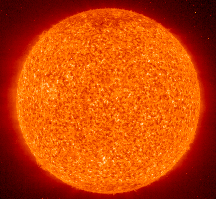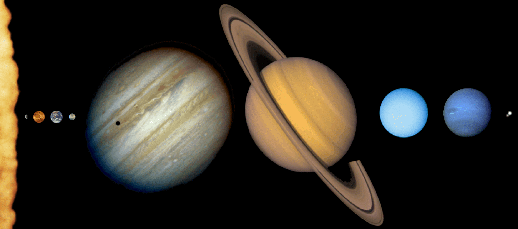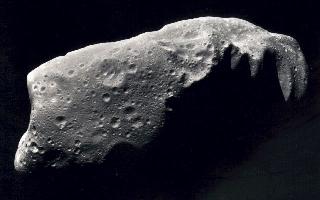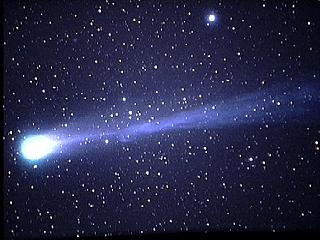Overview of the Solar System
The Sun

-
Big Ball O' Gas: 71% Hydrogen, 27% Helium, 2% heavier elements
-
Radius = 7x105 km (~100 Earth radii)
-
Mass = 2x1030 kg (~300,000 Earth masses)
-
Energy from nuclear reactions: hydrogen fusion into helium.
The Planets and their Satellites

-
The Terrestrial Planets: Mercury,
Venus, Earth, Mars
-
innermost planets
-
smaller, rocky bodies (densities 4.0 - 5.5 g/cm3)
-
complex atmospheres: CO2, H2O, N2
-
The Jovian Planets: Jupiter, Saturn,
Uranus, Neptune
-
more distant
-
large, gaseous bodies (densities 0.7 - 1.6 g/cm3)
-
primordial atmospheres: H, He
-
and Pluto
Asteroids

-
Small, rocky bodies (several thousands known)
-
Most lie in a belt between Mars and Jupiter
-
Up to 1000 km in size (most much smaller)
-
Total mass is less than that of the Moon
-
When small ones enter Earth's atmosphere, we get meteors
-
When big ones enter, we get Hollywood movies!
Comets

-
Small, icy bodies
-
Tails form when they interact with the Sun
-
Travel on highly elliptical orbits
-
Live in very distant regions of the solar system
-
Primordial objects




